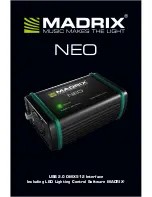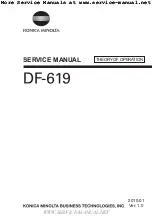
User Manual
Doc. Number: ESO-323064
Doc. Version: 2
Released on:
Page:
33 of 82
Document Classification: Public
The exposure time is set by the two following parameters: the detector integration time
(DIT) and the number of such integrations (NDIT) to be averaged into one single exposure,
whose total integration time is therefore NDITxDIT. The minimum DIT is 1.427s.
The flux level of a pixel always corresponds to an exposure time of one DIT. If NDIT>1, the
reading process is repeated NDIT times and the values for a given pixel are averaged.
Therefore, the saved value always corresponds to an exposure time of one DIT. If the
number of exposures (SEQ.NEXPO) is larger than 1 in the template, each individual
exposure is saved independently.
The optimum combination of DIT and NDIT should be determined with help of the Exposure
Time Calculator (ETC, see 5.3). Bright objects or observations in the L or M bands (high
sky background) require short DITs to avoid saturation; in particular, heavily saturated
spectra lead to detector remanence that affects subsequent observations.
Because the only offered detector read-out mode is the Sample Up The Ramp
(
DET1.READ.CURNAM = New_RR_UpTheRamp
), users must supply only the required DIT,
the read mode software then determines the minimum number of read frames that can be
fitted into the specified time. As shown in Figure 22, before each integration, the pixels are
reset to the initial capacity. During the integration, the detector is non-destructively read
(from two readings in case of the minimum DIT up to a maximum of 36 readings for long
DITs). These detector readings are equidistantly spaced in time. The flux rate per pixel
corresponds to the slope of the flux values of the subsequent readings.
Figure 22: Sample Up The Ramp read-out mode
4.3.1 Dark and gain
The dark current is estimated from the slope of the signal (in ADU or e-) as a function of the
integration time (s) for the linear region.
















































